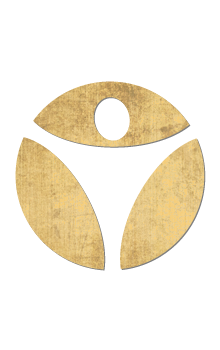How To Do Child’s Pose | Complete Step-By-Step Guide With Common Mistakes, and Modifications For Inflexible Beginners, and Pose Benefits!
- Updated on: January 26, 2022


Purpose
Here are some of the reasons why Child’s Pose is good for you:
- Provides a lengthening stretch to the back, neck and shoulders
- It’s a very calming and grounding pose, helping to ease anxiety
- Stimulates blood circulation for digestive
- Opens the hips and back of the pelvis, alleviating chronic, low-back discomfort

Pose Guide
In order to do Child’s Pose correctly, follow these steps:
- Begin on your yoga mat on all fours supported by your hands and knees. Make sure your hands are directly beneath your shoulders, knees directly beneath your hips, and your feet directly behind your knees.
- Sit back onto your feet, keeping your feet and knees hip’s width apart. The soles of the feet will be facing the sky in the pose.
- Gently lower your upper body forward, resting your forehead on the floor.
- Allow your arms to rest loosely by your sides, hands by your feet, with palms facing the sky.
- Inhale, lengthening your spine. Exhale, relaxing your shoulders.
Practical Tips
Do This, Not That! Common mistakes beginners make:
- Uncomfortably craning neck: It’s easy for beginners as well as those with very tight neck muscles to crane the neck in uncomfortable positions in order to get the forehead to the floor in Child’s Pose. This is counter-productive as it strains the head and neck, canceling out other more beneficial aspects of the posture. See the section below to learn how to modify the pose to support tight, inflexible necks.


Over-engaging the shoulders: Child’s Pose is primarily a resting pose. This means that the arms and shoulders are not actively participating in supporting the position. If you are resting your arms at your sides, note that the arms and shoulders should be soft and relaxed, gently falling downward toward the ground. This position is supported from the ground up by the legs and the core.


- Putting too much strain on the back, knees and ankles: For those with a history of injuries to the back, knees or ankles, it can be a challenge to understand how to perform this pose without doing further damage. It is important not to cause unnecessary stress or pain to these areas in an effort to have the pose look a certain way. See the Modifications Section for information on how to modify Child’s Pose to maintain the comfort and safety of your back, knees and ankles.
Props and Modifications
You should consider a modification if you experience the following:
- Tension in the shoulders and/or back
- Strain, pain or discomfort in the knees, hips or ankles
- Discomfort at your forehead where your head connects with the ground
- Inability to bring your forehead to the ground comfortably
- Discomfort in your abdomen or chest
Tension in the shoulders and/or back:
- Raising the arms overhead with palms flat on the ground can be an alternative position for opening shoulders and relieving tension.


- Place a bolster on the ground between the knees, extending out away from the body. Lower the torso down (turning the head to one side) to rest on top of the bolster for additional comfort and support. This is especially helpful for those with chronic low back discomfort and/or tight shoulders.

Strain, pain or discomfort in the knees, hips or ankles:
- Sit on a block (low or medium height setting) to alleviate strain at the hips, knees and/or ankles.

- Place a folded blanket on the mat. Perform the pose on top of the blanket to provide cushion to the knees and the tops of the ankles.

- Place a rolled towel or folded blanket directly behind the knees to decrease the intensity of the stretch at the knees. Additionally, you can add a bolster or block under the tailbone to create even more space and support.

- For more restrictive physical limitations, Child’s Pose can be practiced on a chair. Simply sit on a comfortable chair that allows your seat to be in line with, or slightly higher than, your knees. Bend forward to rest your torso on your lap, bolster, or on a folded blanket on your lap, if needed.

Discomfort at your forehead where your head connects with the ground:
- Place a folded blanket, towel or bolster beneath your forehead to provide some cushion.
- Alternatively, you can place your hands palm down, one on top of the other, beneath your forehead to make it more comfortable.

Inability to bring your forehead to the ground comfortably:
- Place a block beneath your forehead to elevate your head and lessen the intensity of the forward fold. Alternatively, you can rest your forehead on a folded blanket/towel or on top of your hands/fists to elevate your head in Child’s Pose.

Physical, mental or emotional discomfort in the abdomen or chest:
- Separate the knees and feet to a little wider than hip’s width apart. Place a bolster or stacked folded blankets between the legs, feet, and under the seat. Allow the torso to rest atop the bolster for a sense of support and safety. This also alleviates uncomfortable pressure in the abdomen and chest.
Pregnancy or distended/round belly:
- Keeping the toes together, separate the knees to allow the belly to rest between the knees rather than atop them. This can alleviate uncomfortable pressure in the abdomen. You can also rest your elbows on blocks from a raised position.

Answers to Commonly Asked Questions
- Can I do Child’s Pose if I have bad knees?
- What muscles does Child’s Pose work?
- When is Child’s Pose contraindicated?
- If Child’s Pose is supposed to feel relaxing, why does it feel so stressful for me?
- Should the back be rounded in Child’s Pose?
- Is Child’s Pose a resting pose or an active pose?
Can I do Child’s Pose if I have bad knees?
- As with many yoga poses, chronic knee pain and injury can pose a risk. It is important to work with your primary healthcare provider to determine what is off-limits in your particular case. However most every yoga pose can be modified to accommodate the unique challenges of every body. Check out the modifications section for ideas on how you can make Child’s Pose work for you and your injuries.
What muscles does Child’s Pose work?
- Child’s Pose stretches the entire back of the upper body from the head and neck all the way down the spine to the pelvis and hips. The knees are in full flexion which gives a nice stretch to the front of the thighs, shins and ankles. The vital internal organs of the abdomen are gently toned and massaged during this pose as well.
When is Child’s Pose contraindicated?
- Acute and chronic back, hip, knee and ankle injuries can be a contraindication for Child’s Pose. Talk with your primary healthcare provider about which modifications are best suited for you.
- It is best to perform this pose on an empty stomach. Note: practicing forward folds on a full stomach can cause discomfort and digestive distress for some people.
- Those with high or low blood pressure should exercise caution when practicing Child’s Pose. Consult your primary healthcare provider if you have questions.
- Occasionally people who experience claustrophobia may have adverse reactions to Child’s Pose. See the modifications section to make this a less-enclosed position.
If Child’s Pose is supposed to feel relaxing, why does it feel so stressful for me?
- Some people can feel increased feelings of anxiety or even panic when they are in small, enclosed spaces or when they feel compression of any kind on their chest and/or abdomen. Child’s Pose can produce both of these experiences. If you feel stress or anxiety during this pose, it may be a good idea to try some of the modifications listed above to alleviate pressure and open the pose more.
Should the back be rounded in Child’s Pose?
- While there may be some natural rounding of the back in this position, you should not actively try to round the back in Child’s Pose. This is a pose in which the back is supported by the thighs. Through consistent practice, the back will lengthen and realign itself, relaxing down against the lap and eliminating any excessive roundness in the back.
Additional Resources for beginners
Recent Posts
Categories
Related Articles
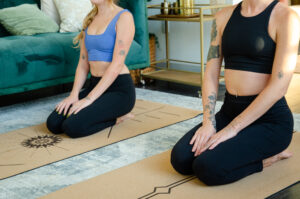
Breathing technique to improve your yoga practice
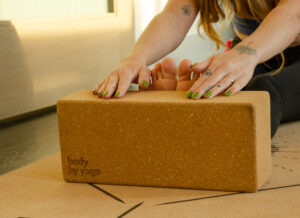
Benefits of yoga before bed
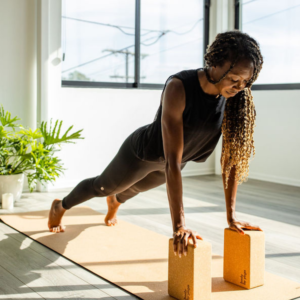
Taking the next step to more challenging yoga
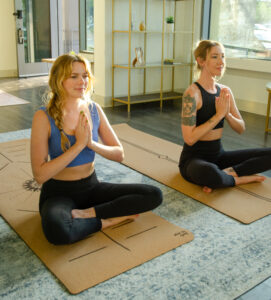
Hatha vs Power yoga
Related Articles
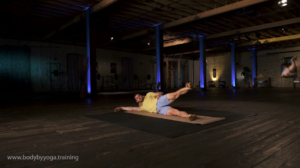
Stretching and Strengthening your hips
In this workout we start slow to warm up your hips. Utilizing low impact workouts like this can be important for beginners and yoga veterans

Hatha vs Power yoga
We’ve created our own unique style of slow burn power yoga that combines Hatha yoga, power yoga, bodyweight exercises and physical therapy. This way in

The importance of maintaining correct alignment
Everything in your body is connected, so when one muscle isnt aligned properly it can be a slippery slope to injury. Building a solid foundation
